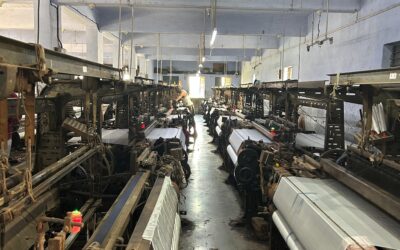While traveling in and out of towns or cities, I have often observed a specific group of people living on the outskirts. You might have seen them too. Have you ever wondered why they live in such miserable conditions? Is it solely for the purpose of earning money, or are there other factors contributing to their situation? Over the past few months, while working with Sakhi Sangini, I am involved in a project where we focus on mobilizing migrant women and strive to foster leadership among them. We are doing this so that they can advocate for their rights and address their issues. I have been working closely with the community of migrant workers in Bhuj, where people primarily come from Rajasthan, Madhya Pradesh, Uttar Pradesh, and different parts of Gujarat.
Amongst various reasons, climate change is a significant driver behind their migration. The changing seasons and resulting alterations in crop cycles and agricultural patterns have profoundly impacted these communities. Small farmers, who lack resources, often find themselves with no choice but to leave their hometowns. They seek work as labourers on construction sites in different cities.
This observation prompted me to consider the environmental impact of migration, both on the migrant workers and on the surroundings they inhabit. In settlements on the periphery of a city or in slum areas.
Climatic Catastrophes and Migrant Communities
Take, for example, the recent Cyclone Biparjoy (locally known as Bavajoda) in June 2023. It severely impacted the coastal villages of Kutch. The cyclone displaced many individuals who had to be moved to temporary shelters. Additionally, the region experienced a 72-hour power outage.
While the cyclone affected everyone, its impact was particularly severe on migrant workers. Their work was disrupted for 10 days. And since they lived in makeshift homes made of tarpaulin, they had to be relocated to nearby centers such as schools for shelter and food provisions. The heavy storms increased the risk of casualties among this population compared to others.

This made me think about the environmental consequence on migrant workers and places where they migrate to, often for survival.
Is Climate A Reason to Migrate?
Many migrant workers come from an agricultural background. They grapple with the consequences of environmental changes, which have rendered agriculture unsustainable, stripping them of their traditional means of livelihood. As a result, they are compelled to seek employment opportunities in different parts of the country. Shifting weather patterns, water scarcity, and soil degradation have taken a toll on agricultural productivity. The once-fertile lands are now barren or unsuitable for cultivation.

Habitats of Migrant Workers and Their Surroundings
Lack of proper sanitation infrastructure such as functional toilets and availability of clean water in these settlements, leads to numerous health problems including waterborne diseases, respiratory illnesses, and infections. Many of these are situated near industrial areas or highways, exposing inhabitants to pollution and related health issues.
Moreover, improper solid waste management leads to garbage accumulation. It attracts disease-carrying vermin such as rats, cockroaches, mosquitoes, ticks, and fleas. Places like Bhuj are already water-stressed. Incoming migration exacerbates water scarcity in these areas.
Additionally, migrant settlements are often established outside the city, on agricultural or forested lands, contributing to soil erosion, deforestation, and land degradation. These areas are also more susceptible to natural disasters, like floods or earthquakes, making migrants particularly vulnerable due to their lack of access to safe shelter and emergency services.
With climate change becoming more real for us, and temperatures rising and falling abruptly now, migrant workers bear the brunt of extreme weather conditions, be it summer, winter, or rainy season.
Further, they resort to burning plastic for cooking food. This not only jeopardizes their health but also harms the environment. Small children, accompanied by their mothers to industrial sites, are exposed to harmful chemicals, posing risks to their still-developing immune systems.
And The Most Affected…
While the environmental impact is on everyone, migrant populations are most adversely affected. Having left their home states in search of livelihood opportunities, these individuals and their families face a plethora of challenges. Climate change-induced shifts in agricultural patterns, coupled with inadequate infrastructure and exposure to pollution, result in dire living conditions. From water scarcity to health hazards, and increased vulnerability to natural disasters, the consequences of migration are multifaceted and far-reaching.






0 Comments